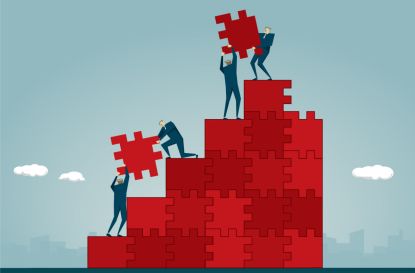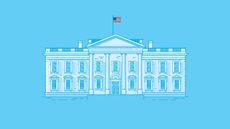Kiplinger’s Business Spending Outlook: Capital Investment Slowing Along With the Economy
Businesses will conserve cash because of uncertain outlook and tighter bank lending.

Kiplinger's Economic Outlooks are written by the staff of our weekly Kiplinger Letter and are unavailable elsewhere. Click here for a free issue of The Kiplinger Letter or for more information.
Business spending, especially on capital equipment, will be on a slowing trend this year. The broader economy appears to be losing steam. Plus, bank lending has tightened in response to the troubles in the banking sector and to the uncertain economic outlook, and interest rates are still high.
Labor costs will continue to rise at a faster-than-usual pace this year. Annual wage growth should ease from 4.5% now to about 3.5% as the economic slowdown reduces hiring, but will stay above the normal 3% rate. Wage gains will be highest in areas with continuing labor shortages, such as in health care, and in the Southern states and Texas, where large in-migration has increased demand for services.

Sign up for Kiplinger’s Free E-Newsletters
Profit and prosper with the best of expert advice on investing, taxes, retirement, personal finance and more - straight to your e-mail.
Profit and prosper with the best of expert advice - straight to your e-mail.
Supply chains are working again, and the costs of ocean freight and truck transportation have dropped. But many companies that source overseas are facing a dilemma: go back to the lowest-cost sources, even if they are in China, or bring sourcing closer to home to avoid geopolitical risk? A number of firms are reshoring to the U.S., but even more have looked to Mexico.
Prices of materials have eased in anticipation of slowing world economic growth. Steel and aluminum prices have been coming down. Copper is off its highs, but it won’t fall much because of lower supply from Chile, a major copper exporter. Commodity prices in general had been expected to rise after China abolished its COVID-19 restrictions and its economy rebounded, but the slowing in Western economies is reducing demand for China’s exports.
Some qualified good news for electric vehicle battery makers: The prices of lithium and cobalt — two raw materials needed for EV batteries — have dropped rapidly this year, but that’s because battery production has outpaced demand.
Demand for semiconductors has tanked in the consumer electronics sector, so these types of chips are in abundant supply now. But the availability of automotive and other specialty chips is still limited. Ramping up production takes time, as factories take years to build. Another problem: Like most complex industrial machinery, chipmaking equipment requires chips, too. In short, expect limited supply for much of this year in the areas where shortages still exist. But if a recession hits, the remaining shortages would likely ease.
Sources:
David is both staff economist and reporter for The Kiplinger Letter, overseeing Kiplinger forecasts for the U.S. and world economies. Previously, he was senior principal economist in the Center for Forecasting and Modeling at IHS/GlobalInsight, and an economist in the Chief Economist's Office of the U.S. Department of Commerce. David has co-written weekly reports on economic conditions since 1992, and has forecasted GDP and its components since 1995, beating the Blue Chip Indicators forecasts two-thirds of the time. David is a Certified Business Economist as recognized by the National Association for Business Economics. He has two master's degrees and is ABD in economics from the University of North Carolina at Chapel Hill.
-
-
 What’s in DeSantis’ $1.3 Billion Florida Tax Relief Bill?
What’s in DeSantis’ $1.3 Billion Florida Tax Relief Bill?DeSantis' $1.3 billion tax relief bill extends sales tax holidays and makes other tax cuts. Here's what you can buy tax-free — and when.
By Katelyn Washington • Published
-
 Letter from the Senior Digital Editor: Celebrating Pride
Letter from the Senior Digital Editor: Celebrating PrideKiplinger senior digital editor Alexandra Svokos writes at the start of Pride Month.
By Alexandra Svokos • Published
-
 Mixed Bag on Business Costs as Manufacturing Costs Fall, Oil is Headed Up: Kiplinger Economic Forecasts
Mixed Bag on Business Costs as Manufacturing Costs Fall, Oil is Headed Up: Kiplinger Economic ForecastsEconomic Forecasts Mixed bag on business costs as manufacturing and gas prices fall, but oil is up: Kiplinger Economic Forecasts
By David Payne • Published
-
 Text-Generating AI Faces Major Legal Risks: Kiplinger Economic Forecasts
Text-Generating AI Faces Major Legal Risks: Kiplinger Economic ForecastsEconomic Forecasts Major legal risks to text-generating artificial intelligence: Kiplinger Economic Forecasts
By John Miley • Published
-
 Shortages Galore Threaten Ability to Power, Heat and Cool Our Homes: Kiplinger Economic Forecasts
Shortages Galore Threaten Ability to Power, Heat and Cool Our Homes: Kiplinger Economic ForecastsEconomic Forecasts Shortages of transformers, heat pumps and air conditioning units are threatening our ability to power, heat and cool our homes.
By Matthew Housiaux • Published
-
 Safety Rights for Key California Workers Could Be Tightened: Kiplinger Economic Forecasts
Safety Rights for Key California Workers Could Be Tightened: Kiplinger Economic ForecastsEconomic Forecasts Safety Rights for Key California Workers Could Be Tightened: Kiplinger Economic Forecasts
By Matthew Housiaux • Published
-
 Car Makers Look To Cut the Cost of Recalls: Kiplinger Economic Forecasts
Car Makers Look To Cut the Cost of Recalls: Kiplinger Economic ForecastsKiplinger Economic Forecasts Faulty software costs car manufacturers $500m in recalls. What are they turning to and what could that mean for you?
By Letter Editors • Published
-
 Tablet Sales Slump After Pandemic Surge: Kiplinger Economic Forecasts
Tablet Sales Slump After Pandemic Surge: Kiplinger Economic ForecastsEconomic Forecasts Tablet sales slump after the pandemic surge, but it’s not all bad news for the sector: Kiplinger Economic Forecasts
By Letter Editors • Published
-
 White House Probes Tracking Tech That Monitors Workers’ Productivity: Kiplinger Economic Forecasts
White House Probes Tracking Tech That Monitors Workers’ Productivity: Kiplinger Economic ForecastsEconomic Forecasts White House probes tracking tech that monitors workers’ productivity: Kiplinger Economic Forecasts
By Matthew Housiaux • Published
-
 Consumers Won't Cut Mobile, Internet Spending, Despite Inflation: Kiplinger Economic Forecasts
Consumers Won't Cut Mobile, Internet Spending, Despite Inflation: Kiplinger Economic ForecastsEconomic Forecasts Consumers Won't Cut Back on Mobile or Internet Spending, Despite Inflation: Kiplinger Economic Forecasts
By John Miley • Published









